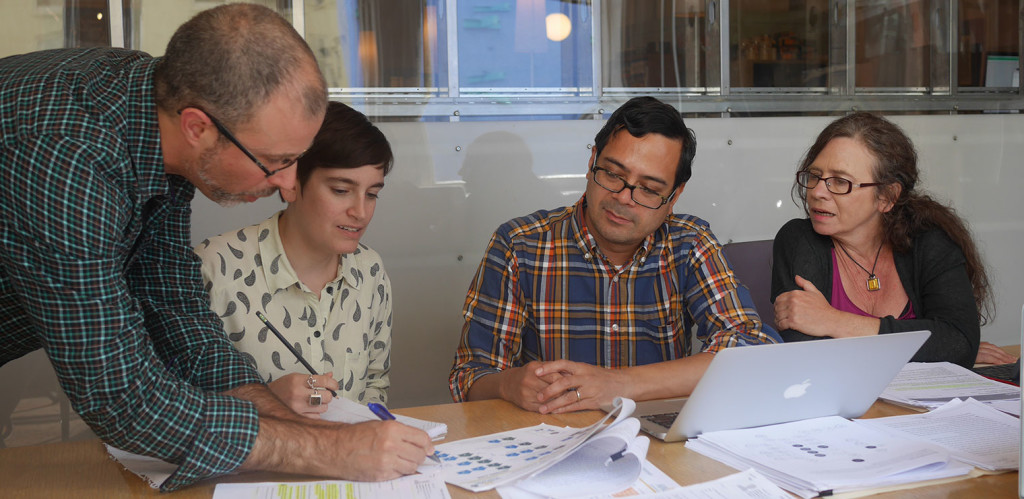The Value of a Design-Driven Web Development Firm

Design isn’t a product—it’s a process, and this process and culture of user focus and collaboration should permeate the whole organization.
Recently at the 2015 Digital Project Managers Summit I had a chance to talk to a number of attendees and speakers from all over North America and Europe. They spanned a wide range of types of firms dealing with building websites for clients. Some were focused on UX and design, some on implementation, and some were a bit of both. I’d worked for many years at companies that were heavy implementation shops with little design thinking where myself and a few others were the only voices championing the value of user experience. Having tired of that, I made the move back into a design-driven environment. At the DPM summit it was interesting to chat with everyone in a concentrated context and to compare approaches. One recurring theme in these conversations was the value of a user-centric, design-driven firm.
Ahead of the summit, we had recently rebranded and relaunched our company, Constructive. It was something our founder Matt Schwartz had desired and thought about for a number of years and finally decided to do. A hard deadline was set, coinciding with our sponsorship of The Communications Network‘s 2015 conference. We were now in a familiar situation: a client (us!) with a huge to-do list: coming up with an execution strategy, redefining the brand, and designing and building the experience online, in print, and in person. The timeline? Three months in which to accomplish, well, everything.
On the technical side, we knew we were going to build the new site in WordPress and it reminded me of a certain temptation I’d seen before: to use some off-the-shelf CMS theme and/or templates and customize it for the site design. The temptation to adapt a cookie-cutter approach is greater at a high-volume firm, where a handful of these kinds of templates are used to cover most of the sites that need to be developed rather than consciously crafting sites around user needs, specific intent, UX, and visual design. One might pursue this route due to cost, a lack of technical skill or bandwidth, turnaround time, or other any number of other reasons. To be fair, responsive websites for creative agencies are often quite similar, and there are a number of products out there that have been created to service this exact market need.
That’s precisely why we never considered going with this approach. For one, it can promote a culture of laziness, sameness, and a lack of empathy. From there, design is hamstrung, client goals get subordinated, and the whole experience suffers—hurting the brand and the user. Where’s the value in that?
For us, cutting corners and reducing value doesn’t work because design isn’t a product—it’s a process, and this process and culture of user focus and collaboration that permeates the whole organization forestalls that. I’m not saying all players involved need to be UX, visual designers, technologists, product managers, system thinkers, or brand strategists rolled into one – rather the team should understand what everyone else does, how they can solve problems (design!) together, and what they can contribute to the overall project goals whether for their own business or for their clients. And it’s a culture that can be created at any tech company if you want it.
Sam Barnes gave a great talk at the DPM summit, “You Can Do Well, or You Can Do Good”, where he said that you should be as much a champion for your client as your own company. Similarly, Paul Boag’s session on “The User Experience Delusion” explored this theme, and the importance of not just technology plugging the gaps between systems, but about going deeper. To think beyond the screen, to focus on empathy, to fight for a better product, to champion the user.
At Constructive, this is what design-driven means and how we approach working with clients and projects in the nonprofit and higher-education space. Operating this way for ourselves we were able to shift worrying about the timeline, specific technology, and other needs around the Constructive rebrand to focusing on what needed to be done to achieve appropriate goals and how to continue to build upon them. We trust each other to solve problems as they arise and bring together diverse and sometimes seemingly unrelated skills of our team and of our clients to do so, creating a better journey and experience for everyone along the way. Design is the process and trusting the process can lead you to amazing places. This is where the value lies.
–
A version of this article originally appeared on Constructive Thinking.